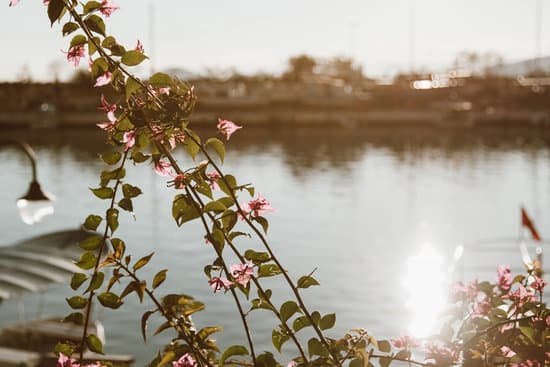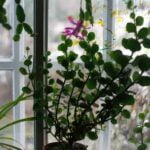Are you looking for landscaping ideas without plants? Have you ever considered the beauty of a plant-less landscape? In this article, we will explore the various elements and design techniques that can create a stunning outdoor space without relying on traditional greenery. From hardscaping elements to water features, outdoor structures, and minimalist designs, there are endless possibilities for creating a visually appealing landscape without the use of plants.
Hardscaping elements play a crucial role in creating an attractive plant-free landscape. Using materials such as stone, gravel, and wood can add texture and visual interest to outdoor spaces. Additionally, incorporating water features such as ponds, fountains, and waterfalls can bring a tranquil and modern touch to your landscape design. We will also discuss how outdoor structures like pergolas, gazebos, and decks can enhance your outdoor space without the need for traditional gardening.
Embracing a minimalist approach to landscaping without plants can result in a sleek and modern look. We will explore creative ways to use lighting for ambiance and safety in a plant-free landscape. Furthermore, we will discuss how incorporating art and sculptures into the design can add visual interest to the outdoor space.
Finally, we will provide maintenance tips to keep your plant-less landscape looking clean and well-kept. Whether you prefer a contemporary or minimalist style, there are plenty of options for creating an appealing outdoor space without relying on traditional plants.
Hardscaping Elements
When it comes to landscaping ideas without plants, hardscaping elements play a crucial role in creating a visually appealing and low-maintenance outdoor space. By utilizing materials such as stone, gravel, and wood, homeowners can achieve a modern and sophisticated landscape design that does not rely on traditional greenery.
Stone Pathways and Retaining Walls
One way to incorporate hardscaping into your plant-free landscape is by adding stone pathways and retaining walls. These elements not only add visual interest but also serve practical purposes such as defining different areas of the yard and preventing soil erosion. Choose from a variety of stone options such as flagstone, slate, or gravel to create unique patterns and textures that complement the overall aesthetic of your outdoor space.
Wooden Decking and Fencing
Wood is another versatile material that can be used to enhance a plant-less landscape. Opt for a wooden deck or patio area to create an inviting space for outdoor entertaining and relaxation. Additionally, consider adding wooden fencing to provide privacy and structure to your yard while incorporating natural textures into the design. With proper maintenance, wood can withstand the elements and continue to add warmth and charm to your landscape for years to come.
Gravel Areas and Rock Gardens
For a contemporary look, incorporating gravel areas and rock gardens can add dimension and visual appeal to your outdoor space. Gravel can be used for pathways, driveways, or as ground cover around seating areas. Similarly, rock gardens featuring carefully selected stones can serve as focal points within the landscape while requiring minimal upkeep. These elements provide texture and contrast without the need for traditional plants.
By creatively using these hardscaping elements in your landscape design, you can achieve a stunning environment without relying on live vegetation. Whether you choose stone pathways, wooden decking, or gravel areas, incorporating these materials offers endless possibilities for creating an eye-catching outdoor retreat with minimal maintenance requirements.
Water Features
Tranquil Pond
One of the most popular water features to incorporate into a plant-less landscape is a tranquil pond. A serene pond can add visual interest and create a peaceful ambiance in your outdoor space. Whether you choose to install a small, decorative pond or a larger koi pond, the calming effects of water can greatly enhance the overall appeal of your landscape. Consider adding rocks, pebbles, or even a small bridge to further enhance the beauty of your pond.
Elegant Fountain
Another option for adding water features to your plant-less landscape is to include an elegant fountain. Fountains come in various styles and sizes, making it easy to find one that fits the aesthetic of your outdoor space. From modern, minimalist fountains to more intricate and ornate designs, there are plenty of options to choose from. The gentle sound of flowing water from a fountain can create a relaxing atmosphere and serve as a focal point in your landscape design.
Dramatic Waterfall
For those looking to make a bold statement in their plant-free landscape, incorporating a dramatic waterfall can be an excellent choice. Whether natural-looking or contemporary in style, a waterfall adds movement and sound that can transform your outdoor space into a truly captivating environment. By carefully selecting the materials and design elements for your waterfall feature, you can achieve a modern and luxurious look without the need for traditional plants or greenery.
Outdoor Structures
When it comes to landscaping ideas without plants, outdoor structures play a crucial role in creating an inviting and functional outdoor space. Pergolas, gazebos, and decks are popular choices for enhancing the aesthetic appeal of a plant-less landscape while providing practical benefits for homeowners. These structures can serve as focal points, seating areas, or extensions of the living space, adding depth and dimension to the overall design.
Pergolas are versatile outdoor structures that can be used to define an outdoor living area, provide shade, and support climbing vines or hanging plants. They come in a variety of materials such as wood, vinyl, and aluminum, allowing homeowners to choose a style that complements their home’s architecture and design aesthetic.
Gazebos, on the other hand, offer a more enclosed and intimate space for relaxation or entertainment. With options for open or screened designs and various roofing materials, gazebos can create a cozy retreat within a plant-free landscape.
Decks are another essential element in plant-less landscaping, providing a platform for outdoor activities such as dining, sunbathing, or socializing. Like pergolas and gazebos, decks come in different materials like wood composite or PVC decking to suit the homeowner’s preferences for appearance and maintenance requirements. Regardless of the choice of structure, each one contributes to the overall function and visual interest of a plant-less landscape.
| Outdoor Structure | Benefits |
|---|---|
| Pergolas | Provide shade and support climbing plants |
| Gazebos | Create an enclosed space for relaxation or entertainment |
| Decks | Provide a platform for various outdoor activities |
Lighting Effects
If you are looking for landscaping ideas without plants, consider the creative use of lighting to enhance the ambiance and safety of your outdoor space. Lighting can play a crucial role in creating a visually appealing landscape that does not rely on traditional plant elements. By strategically placing lights, you can highlight architectural features, create a warm and inviting atmosphere, and ensure that your outdoor space is well-lit for safety.
One effective way to utilize lighting in a plant-free landscape is to incorporate uplights to showcase the exterior of your home or other outdoor structures. By positioning uplights at the base of walls or architectural elements, you can create a dramatic effect that adds depth and visual interest to your surroundings. Additionally, using spotlights to illuminate pathways and walkways not only adds a sense of security but also enhances the overall aesthetic of the space.
In addition to traditional electric lighting, consider incorporating solar-powered pathway lights and LED fixtures for energy efficiency. These eco-friendly options can provide subtle illumination along walkways and garden beds without detracting from the plant-less aesthetic. By carefully selecting and placing various types of lighting, you can achieve a beautifully illuminated landscape that is both stylish and functional without relying on traditional plants for visual appeal.
Minimalist Design
When it comes to landscaping, minimalist design is all about simplicity, clean lines, and open spaces. Embracing a minimalist approach to landscaping without plants can create a sleek and modern look for your outdoor space. By focusing on hardscaping elements, outdoor structures, and artistic features, you can achieve a sophisticated and low-maintenance landscape that is both visually stunning and functional.
Here are some key elements to consider when embracing a minimalist approach to landscaping without plants:
- Use of geometric shapes and clean lines in the layout of pathways, patios, and other hardscaping features.
- Incorporation of natural materials such as stone, concrete, and wood for a simple yet elegant aesthetic.
- Limited use of decorative elements to maintain a clean and uncluttered look.
By implementing these minimalist design principles, you can create a stylish and contemporary landscape without the need for traditional plantings. This approach is perfect for those who prefer a more modern and streamlined outdoor space.
When it comes to maintenance, keeping a plant-less landscape looking clean and well-kept is relatively straightforward. Regularly sweeping paths and cleaning hardscaping features will help maintain the minimalist aesthetic. Additionally, staying on top of any repairs or maintenance needed for outdoor structures will ensure that your landscape continues to look sleek and modern over time.
Incorporating Art and Sculptures
When it comes to landscaping, plants are not the only way to create a visually stunning outdoor space. Incorporating art and sculptures can add a unique and creative touch to your landscape design. Whether you prefer modern sculptures or classical statues, there are endless opportunities to showcase artistic elements in your plant-free outdoor space.
Here are some ideas for incorporating art and sculptures into your landscape without using any plants:
- Install a focal point sculpture: Choose a statement piece that draws the eye and creates a visual centerpiece for your outdoor space. This could be a large modern sculpture, a whimsical metal installation, or a classical marble statue.
- Create an art gallery: Displaying artwork outdoors can add another dimension to your landscape design. Hang paintings or photographs on sturdy outdoor walls, or opt for weather-resistant sculptures and installations that can withstand the elements.
- Integrate functional art: Select furniture, fire pits, or decorative screens that also double as works of art. These pieces can serve dual purposes by adding visual interest while also being useful in the outdoor living space.
By incorporating these artistic elements into your plant-less landscape, you can create a visually intriguing and dynamic outdoor space that reflects your personal style and creativity.
In addition to adding visual interest to your landscape, maintaining art and sculptures in an outdoor setting is essential. Regular cleaning and upkeep will help preserve the beauty of these elements and ensure they continue to enhance your plant-free landscape for years to come.
Maintenance Tips
In conclusion, landscaping ideas without plants offer a unique and modern approach to outdoor design. By focusing on hardscaping elements, water features, outdoor structures, lighting effects, minimalist design, and incorporating art and sculptures, homeowners can create a stunning landscape without the need for traditional plantings. This innovative approach not only provides a low-maintenance option but also opens up endless possibilities for creative expression in outdoor design.
One of the key advantages of plant-less landscapes is the reduced maintenance required to keep the outdoor space looking clean and well-kept. With minimal plant care and upkeep, homeowners can devote more time to enjoying their outdoor space rather than tending to plants and gardens. Additionally, by utilizing durable materials such as stone, gravel, wood, and water features, the longevity of these elements contributes to a landscape that remains visually appealing year-round.
When considering landscaping ideas without plants, it’s important to focus on creating a harmonious balance between the various hardscaping elements, water features, lighting effects, and artistic elements. By carefully integrating these components into the outdoor space and following maintenance tips for cleaning and preserving these features, homeowners can achieve a beautiful and inviting landscape that reflects their personal style while minimizing the need for ongoing plant care.
Ultimately, by embracing this innovative approach to landscaping design, individuals can create an outdoor oasis that is both visually striking and easy to maintain.
Frequently Asked Questions
How Can I Decorate My Yard Without Plants?
Decorating your yard without plants can be achieved in a variety of ways. Adding decorative elements such as outdoor furniture, sculptures, or water features can create visual interest.
Installing pathways, decking, or stones can also add texture and structure to the space. Additionally, outdoor lighting and colorful decorations like wind chimes or banners can help personalize the area without relying on plants for decoration.
What Is the Best Low Maintenance Landscaping?
The best low maintenance landscaping typically involves using a combination of hardscaping and low-maintenance plants. Hardscaping elements such as rocks, gravel, mulch, and pavers require minimal upkeep and can provide structure to the landscape.
Choosing drought-resistant or native plants that require less water and maintenance is also key. Additionally, incorporating automated irrigation systems and creating designated areas for specific uses (like a play area or entertainment space) can contribute to a low maintenance landscape design.
How Do I Landscape My Backyard on a Budget?
Landscaping a backyard on a budget can be achieved through several cost-effective strategies. Utilizing native plants that are well-suited to the local climate can reduce the need for excessive watering and care.
Creating functional outdoor living spaces like patios, decks, or fire pits using affordable materials like gravel or concrete pavers can also help save costs. In addition, purchasing seasonal plants at discounted prices, opting for seed instead of sod for lawn establishment, and implementing DIY solutions for tasks like mulching or composting can further minimize expenses while achieving an attractive backyard landscape.

Welcome to my gardening blog! I am passionate about plants and enjoy sharing my knowledge and experiences with others. In this blog, I will write about everything related to gardening, from tips on how to get started to updates on my own garden projects.





